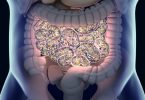As a society, we usually associate the word cholesterol with sickness, decline, and poor eating habits. In fact, whenever you hear the term cholesterol used in the news it’s usually to inform you about what foods will raise your (cholesterol) levels, or what you can do to manage them. What most people don’t realize is that cholesterol is not “the bad guy”, in fact it is a necessary bio-molecular component of the human body that both assists in synthesizing steroid hormones as well as aiding in membrane fluidity (among other things). Without cholesterol, life would not be possible; but it must also be closely monitored. This is of course where cholesterol metabolism comes into play, which seeks to fend off allowing cholesterol and lipoproteins from being depositing all over the circulatory system.
Cholesterol is not soluble in the bloodstream; therefore it needs additional transport to get where it is going. This is of course where LDL and HDL (or low-density lipoproteins and high-density lipoproteins) come into play. These lipoproteins assist in delivering cholesterol to cells so that it may perform its necessary tasks. In the gallbladder, cholesterol acts in tandem with bile acids in order to aid in digestion.
Even though cholesterol is very important, it is extremely dangerous if there is an over-abundance of it. This is why doctors all across the globe routinely speak out against poor dietary habits; particularly those that that promote the build-up of LDL, or the ‘bad cholesterol’. In turn, many of these same doctors recommend a diet which is designed to reduce LDL levels while promoting HDL levels (which may help to remove / prevent the buildup of arterial plaque). So what’s a good LDL reducing diet, you ask? Fresh fruit, Orange Juice, 5 servings of vegetables a day, and fish (like wild Alaskan Salmon) are just a few of the foods that work to promote healthy cholesterol levels.







